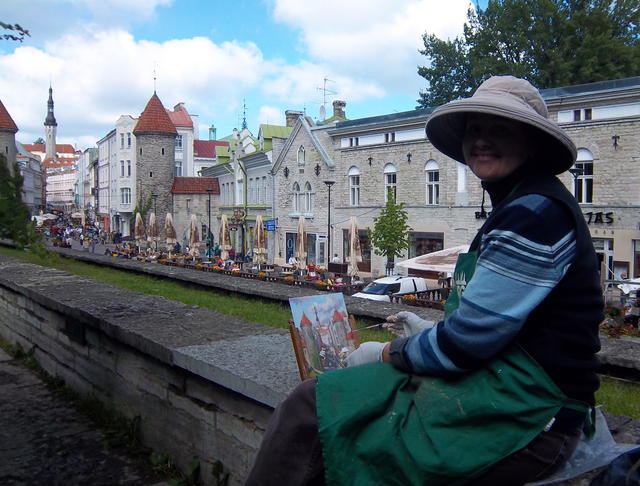Materials:
Whatever medium you choose, keep it simple. When you walk a long distance to find a subject to paint, you quickly learn to limit the amount of things you have to carry.
- Easel with legs and box drawer for paint, brushes …The lighter your easel’s weight is, the better.
- If you cannot stand when you paint, plan to have a folding char or a stool.
- Paint. Consider using a basic palette of seven colors: a warm and cool version of the three primary colors, plus white. (primary colors are: cobalt blue, ultramarine blue, alizarin crimson, cadmium red, cadmium yellow and lemon yellow. You may add to your palette some additional colors of your choice, such as viridian green).
- Solvent or water
- A dipper (palette cup) for solvent or water
- Brushes
- Palette
- Canvas, hardboard primed panel, or paper
- Trash bag
- Paper-towel or rugs
- Palette knife
- Sketchbook, soft pencil or charcoal
- Umbrella
What to wear:
- Dress in comfortable work clothes with layers accordingly to the weather forecast.
- Have long pans and sleeves to protect you from bugs and sun.
- Have a hat with wide brim.
- Comfortable, walker shoes.
For your safety:
- Have your cell phone with you.
- A bottle of water to avoid dehydration.
- Repellent
- Sunscreen
- Work in group or pairs, or tell someone where you are going.
- Use your best judgment for possible danger when you choosing site to paint.
Painting process:
- Select a spot where your work, palette, and you will be in the shade.
- Estimate the sun movement. It is better to find a location with insignificant light movement.
- Observe the tonal and color relationships between shadowed and sunny areas.
- Make a couple compositional sketches in your sketchbook. Choose angle of view, format and shapes, what to emphasize, evaluate proportions, tonal values, silhouettes.
- Make a to-do plan. Evaluate the balance of light and dark masses, see direction of the light and even feel the mood. Set correct values.
- Start with the most obvious and then go to unclear. Block in the basic colors and shapes.
- In order to achieve fresh feeling in resulting painting fill patterns of colors as correctly as you can, and don’t redo much. (plein air is valuable for the relation's observation, not a precise study).
- Start your painting using big brush strokes to define big relations. (between sky, trees and ground)
- Brushstroke should be thought out three times and executed only once.
- Paint quickly. Start with only a little paint on your canvases and avoid mixing colors on the palette. If you use white too soon and you fussing too much over the same area, you will have chalkiness on your painting.
- Exaggerate the differences between colors and tonal values.
- When you start to work on details just suggest.
- Step back frequently so you can see the whole picture.
- Diffused edges enhance the sense of atmosphere. Hard edges can make your painting flat.
- Colors look more intense when placed next to their compliments.
- Aerial perspective affects both tone and color. There should be a noticeable reduction in the degree of tonal contrast as the distance between you and what you paint increases.
